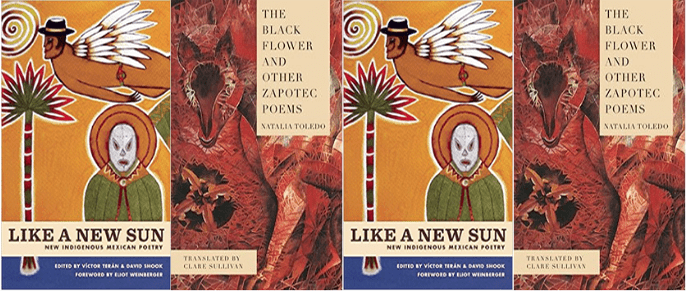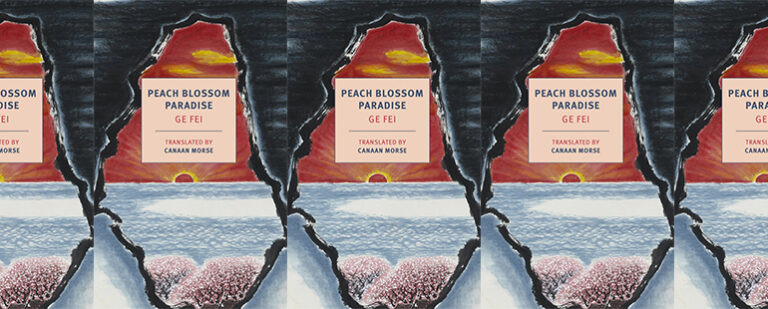Mexican Indigeneous

It might be considered anathema to our neighbors south of the Rio Grande but Phoneme Media is having a veritable publishing celebration of indigenous Mexican poetry. This small, indie publisher with one of the coolest catalogues of world lit understands what Anthony Seidman wrote recently in World Literature Today yet it still wants to bring U.S readers two books of indigenous material.
“The message is clear: the poetry that really matters in Mexico that which is written in Spanish,” says Seidman. In fact, making these Phoneme titles even more compelling, he tells us that Mexicans “express ambivalence or disdain for contemporary poetry written in Zapotec, Nahuatl, etc.”
Editorial director David Shook disagrees. “I have found that Mexican Americans are interested in mestizaje and their own indigenous heritage. It’s an exciting time to be publishing translated literature, because there is a real enthusiasm among the reading public, in my experience. I’ve found that readers are often excited to discover new indigenous voices.”
Surely the release of Like a New Sun: New Indigenous Mexican Poetry and The Black Flower and Other Zapotec Poems should be celebrated for their rich, highly rewarding content, the extensive efforts to compile the material, and the beauty of the books themselves.
In The Black Flower, a collection of Natalia Toledo’s poetry, the seamlessly deft translator Clare Sullivan tells us that though Zapotec has been around as a written language for two millennia, Toledo’s the first to write and publish poetry in it. Toledo is also a jewelry designer and chef, which influence her to write with “color, sound and story.” Her themes include traditional tales of humanity’s origins, her own childhood, and flowers—lots of flowers, as if she picked up the ball from Georgia O’Keeffe and ran poetically with it. She plays jubilantly with words and their translations (“The word ojo has eyes/serious and round”) and she plucks the essence of a moment almost enough to make the reader experience it ourselves. These qualities make for fun reading, especially when she captures those first physical steps of lovemaking and the cold seconds of the separation of coitus.
Toledo’s work is poignant, brow-raising, sensorily rich, and, like the poets in Like a New Sun, often quite short. That brevity, bejeweled with fun and provocative diction and a powerful, womanly thrust brings this indigenista straight to the forefront, where she belongs. She would fit quite well in the pages of literary magazines that specialize in short, edgy, sometimes avante garde work like Small Po[r]tions Journal and Concis, or the several tits-forward women’s lit journals.
Shook, one of the translators and co-editors (with Victor Terán) behind Like a New Sun, took a different direction with that book. This book anthologizes six contemporary poets writing in a variety of native languages such as Zoque, Yucatec Maya, and Tsotsil. The first poems come from Juan Gregorio Regino, a leading figure in the indigenista movement that spread throughout Latin America in the 20th century and included such figures as Peru’s José María Arguedas. English language translations of Regino’s work have appeared in, among other places, Words Without Borders, which features four of his poems.
In this book they were translated by Jerome Rothenberg, Shook, Jacob Surpin, and Eliot Weinberger. It’s full of cadences that pulsate through the translated languages and resonate like drum beats in your ear through lines like this:
Here the fiesta ends,
the road is closed, the song is over,” and this:
“The birds trace paths, the earth is fasting.
The moon confides her troubles to the sun
And dawn shakes loose on the horizon.
In Regino’s poems the heavens meet the ground and a horizon full of images from flora to fauna frolics through the reader’s mind. He inspires a mental traveler to venture across time and borders in a sort of anthropological study that links historical facts that have flittered across the recesses of our imaginations since grade school, and we venture from the Bering Strait to Tierra del Fuego at the top of South America.
Much of the other poetry in this anthology is barely longer than aphorisms. Yet it’s meaty enough to sink your mind into, letting it meander as you roll the words over and over like juicy bits of steak. That’s true in the work of Enriqueta Lunez, whose poems were translated by Sullivan. For example, consider “Sign.” It begins:
A bird sings
a dog cries
the wary snake climbs into your dreams
and one day you dream dressed in black.
In just six more lines the reader is left with an impression of how far we’ve stepped away from nature, how foreign it is to us, how distant we’ve become to what’s real and whole. It’s not a depressing poem, mind you. Nor is it pedantic or dogmatic. It may not even have anything to do with that interpretation at all but it leaves an indelible imprint. Death crosses through the rest of her work often, as do Christian images and old customs of vigils. Her literary voice ranges from sassy to haunted, and from Burroughsian hallucinatory to Poeian darkness.
Phoneme prompts us to dig deeper into the discovery of indigenous Mexican poetry with audio and video recordings of the native- and Spanish-language versions, which is a terrific way to gain further appreciation for the rhythms of these translated works.
Another book to consider as you search for similar books is the University of Texas Press Words of the True Peoples: Anthology of Contemporary Mexican Indigenous-Language Writers.


